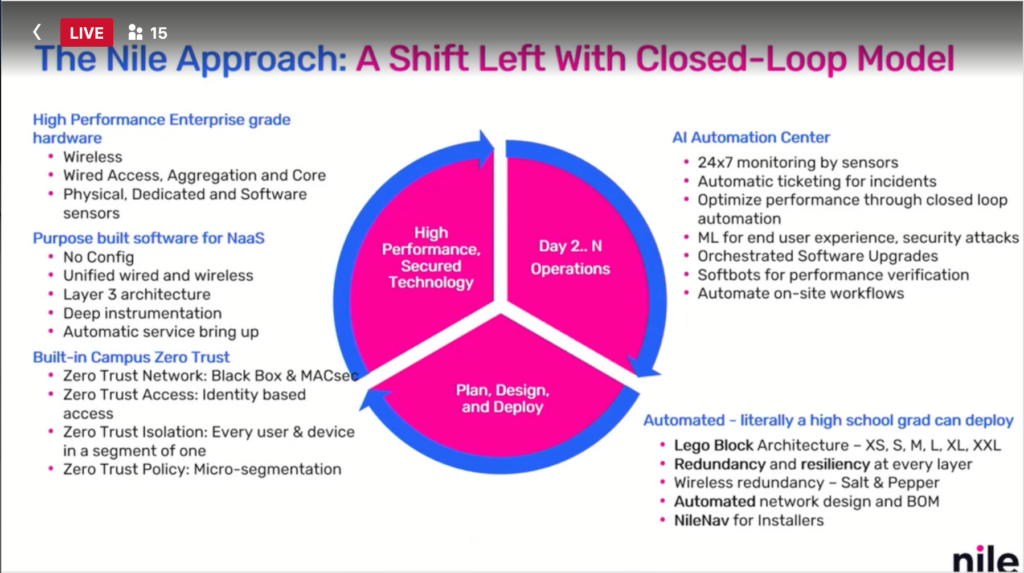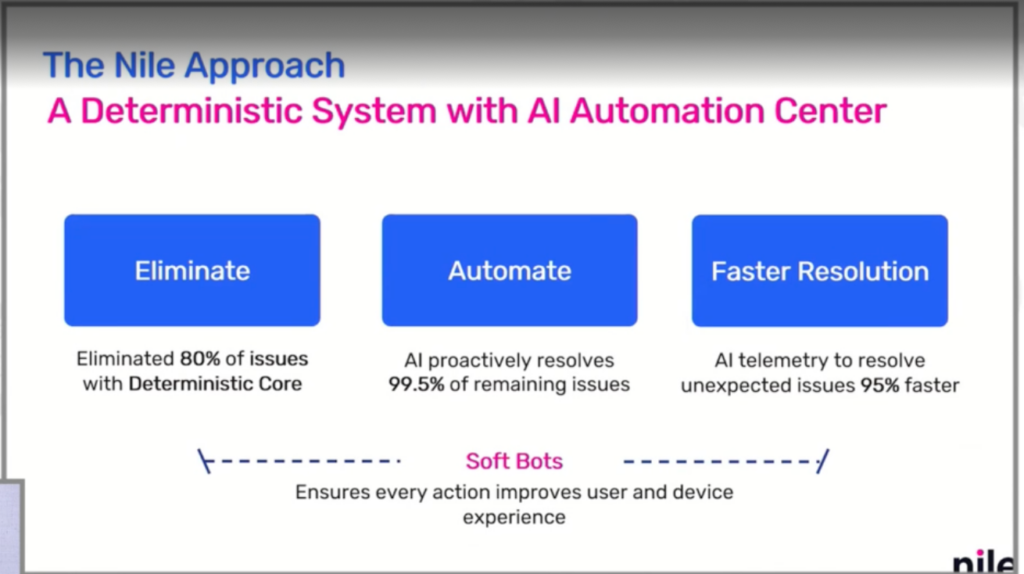Network as a Service: The Future of Connectivity as a Utility
“Connectivity should be as simple, secure, and reliable as electricity.”
Nile opened their presentation at #MFD12 with the quote above. For those not familiar with Nile, they are reimaging wired and wireless networking with a bold vision of what modern networks aim to achieve. This vision encapsulates the promise of Network as a Service (NaaS): delivering network performance that performs seamlessly, just like flipping on a light switch or plugging in a device.
In a world where businesses rely on connectivity for everything from collaboration to commerce, the demand for simplicity and reliability has never been higher. Just as no one wonders about the intricate design of the power grid before turning on a lamp, users expect their networks to perform effortlessly. They simply want to connect and trust that it works—securely, efficiently, and without interruption.
A Utility-Like Experience
NaaS redefines how networks are managed and delivered, making network infrastructure as accessible and predictable as electricity. By moving away from traditional in-house infrastructure management, NaaS eliminates the complexity, cost, and unpredictability of maintaining bespoke network setups.
For businesses, this means no longer needing dedicated teams to oversee on-premises hardware, troubleshoot outages, or manually implement upgrades. Instead, NaaS providers deliver a turnkey solution, handling everything from initial setup to ongoing maintenance. The result is a streamlined experience where businesses can focus on innovation and growth rather than managing network details.
No Room for Snowflake Networks
One of the most significant shifts with NaaS is the move away from supporting “snowflake” networks—those one-of-a-kind configurations that are difficult to replicate, maintain, or scale. NaaS thrives on standardization, offering highly scalable and adaptable solutions that meet the majority of business needs without the complexity of customization.
While this may concern some network professionals accustomed to building bespoke solutions, it’s important to recognize that standardization doesn’t mean sacrificing quality or performance. Instead, it ensures reliability, simplifies troubleshooting, and reduces costs.
Nile based their vision of NaaS on a closed loop model that shifts project delivery to the left making them, for the moment, seem like salmon swimming upstream in the current mindset of network practitioners when it comes to eliminating in-house network expertise. Newer business models looking to streamline internal resources will be restructuring to keep resources that directly contribute to what the business is delivering. Basic utilities are expected to be there and perform, like power, lighting, climate controls, water, and network access.

In the future, in-house network infrastructure teams may be as valuable as lifeguards at the Olympics. To make up for the migration in human expertise, Nile doubles down on incorporating AI-driven improvements and automated changes to maintain efficiency and optimal performance. AI and Automation driven monitoring are used to ensure optimal user expectations are delivered.
The Role of Design and Project Management
Many network infrastructure projects fail because methodic and consistent design and project management practices are not followed. Add that to the layer 8 complexities of managing in-house staff and we have identified 80% of the reasons infrastructure projects fail.

Network practitioners can continue to take comfort in knowing that their expertise is still critical at the start of the NaaS journey. Proper design and project management practices are essential to ensure the network infrastructure can meet business goals, performance requirements, and regulatory compliance.
During the initial stages, network professionals will assess the organizational needs and map out the architecture to provide a robust solution. This phase is crucial to the success of the transition, ensuring the network infrastructure delivers the performance expected by the business while adhering to best practices.
At a high-level, Nile’s Design & Deploy delivery model includes:
- Site Discovery & Survey
- Automation of BoM creation
- Digital Twin
- Cabling & closet
- Inter/intra connect plan
- Mobile App guided installing instructions
- Monitoring and SLA’s
- Troubleshooting
- End user self -serve portal
- Deviation from planned detection
- WLAN creation
- Detection of common infrastructure issues
Once the solution is implemented and accepted, the heavy lifting of day-to-day management shifts to the NaaS provider. From that point on, the network runs like a utility—reliable, scalable, and worry-free.
Embracing the Change
For many network professionals, the transition to NaaS may feel like a fundamental change in their role. However rather than replacing their expertise, NaaS elevates their work. By offloading routine tasks and infrastructure management to the service provider, IT professionals can pivot to focus on strategic initiatives, like optimizing applications, driving digital transformation, and ensuring seamless user experiences.
This shift also aligns with broader business priorities. Companies are increasingly prioritizing operational efficiency, agility, and resilience. NaaS delivers on all three, providing a scalable, secure, and predictable cost-effective solution that evolves with the business.
The Future of Connectivity
Network as a Service represents a paradigm shift in how connectivity is delivered, managed, and experienced. It offers a future where networks are no longer a source of complexity but a utility that businesses can depend on without a second thought and without the need to have dedicated in-house resources.
By embracing NaaS, organizations and their IT application teams can deliver business goals to their own customers while standing on the shoulders of a vision for connectivity that is “as simple, secure, and reliable as electricity.” It’s a future where everyone can focus on what truly matters: powering innovation and driving success.
The lights are already on—are you ready to flip the switch?
Slàinte!
Resources
Nile presentations from Mobility Field Day 12